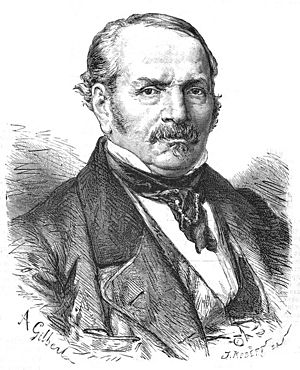Spiritism facts for kids

Spiritism is a doctrine promoted by the French professor Allan Kardec. His first two books were:
- The Spirits' Book — Defines the guidelines of the doctrine, covering points like God, Spirit, Universe, Man, Society, Culture, Morals and Religion.
- The Mediums' Book — Details the mechanics of the spiritual world, the processes involved in channeling spirits, techniques to be developed by mediums, etc.
Other characteristics ideas of his were:
- Promoting the dialog between the three classical forms of knowledge (science, philosophy and religion) for achieving a more complete comprehension of the reality;
- Submitting the fundamental points of the religious systems to a critical and empirical exam, for separating fantasy and reality. This way, men can avoid materialism and dogmatism at once, being critical and spiritual.
- Emphasizing human power and responsibility for acting, creating and changing the world around.
Although Kardec claimed it was distinct, spiritism is similar to spiritualism. Kardec's books were based on reporting séances in which he claimed to observe phenomena which he attributed to incorporeal intelligence (spirits). Arthur Conan Doyle included a chapter about Spiritism in his book History of Spiritualism. This said that Spiritism is Spiritualist (but not vice-versa). As a consequence, many Spiritualist works are widely accepted in Spiritism, particularly the works of scientists Sir William Crookes and Oliver Lodge.
Images for kids
-
Allan Kardec, portrait from L'Illustration, 10 March 1869
-
Monument to Chico Xavier in Chico Xavier Square, Pedro Leopoldo City.
See also
 In Spanish: Espiritismo para niños
In Spanish: Espiritismo para niños






